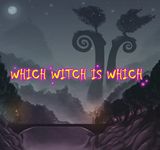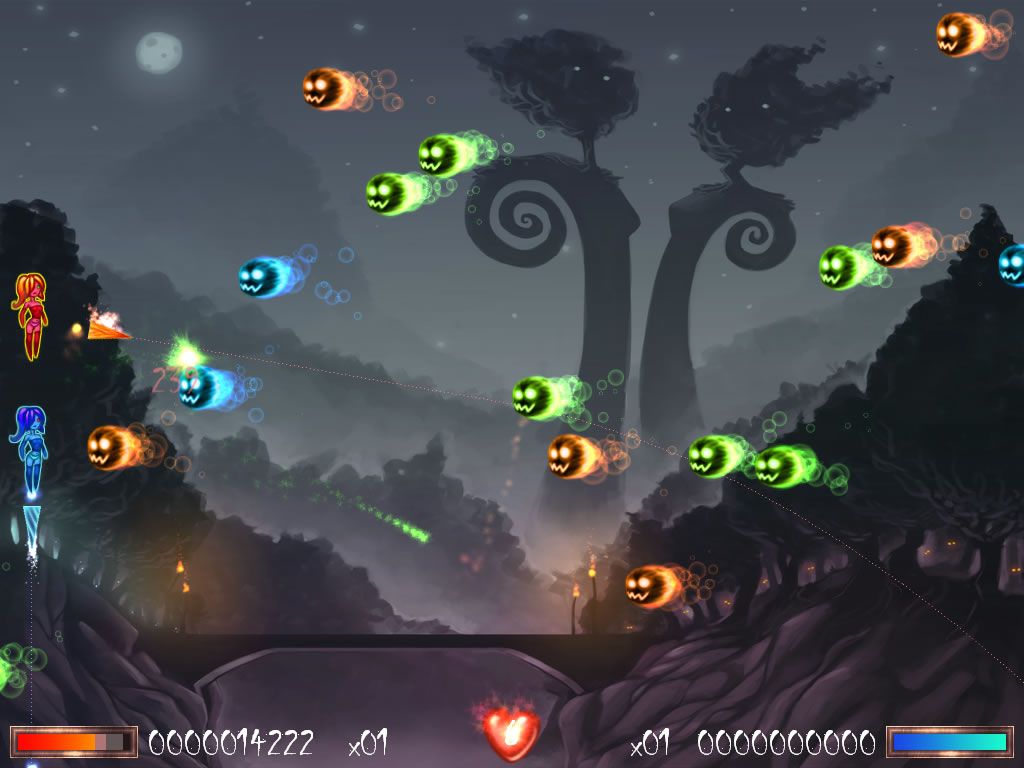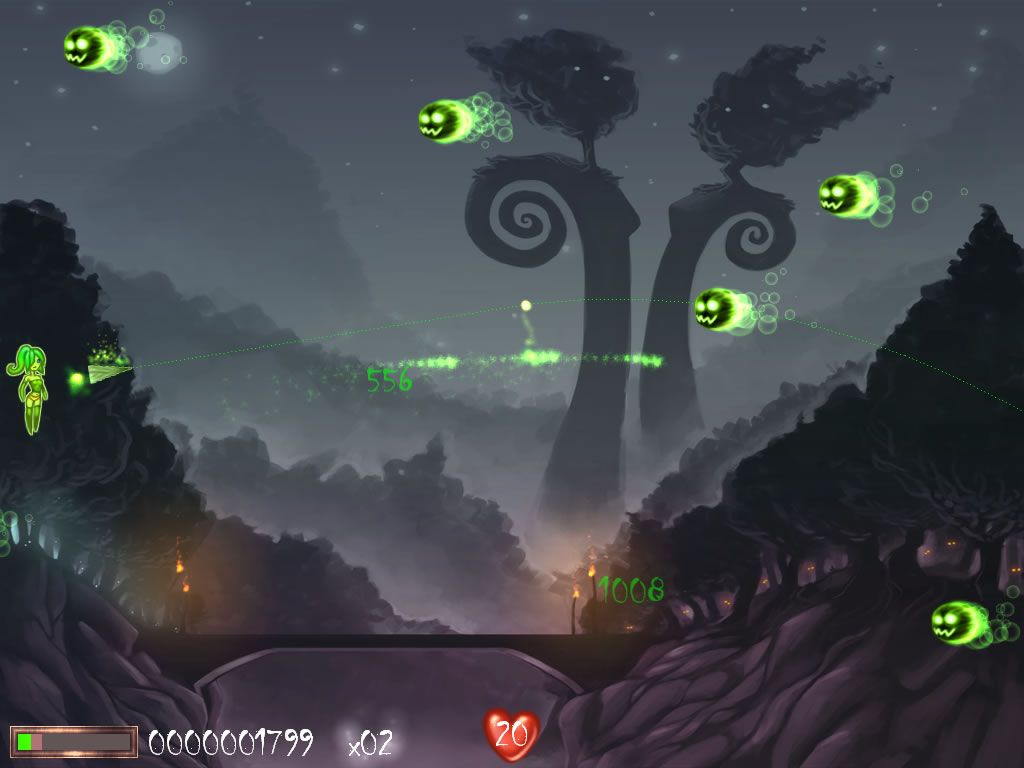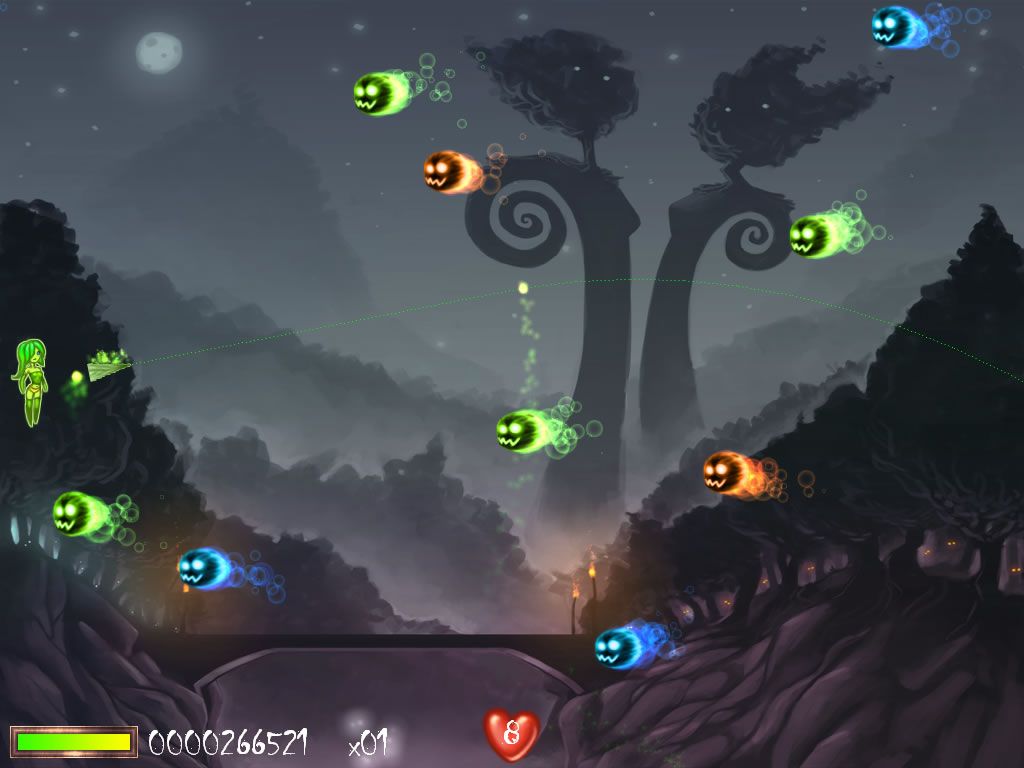Retro Replay Review
Gameplay
Which Witch is Which? delivers an immediate rush of arcade-style action the moment you press down on the fire key. Your witch stands firm on the left side of the screen, but the challenge is anything but static. Magic essences of varying colours charge in from the right, and your reflexes, aim and colour-matching skills are put to the test as you try to keep them from draining your life bar. The core loop is simple—aim, shoot, score—but mastering the angled trajectory of each spell elevates the challenge to addictive heights.
(HEY YOU!! We hope you enjoy! We try not to run ads. So basically, this is a very expensive hobby running this site. Please consider joining us for updates, forums, and more. Network w/ us to make some cash or friends while retro gaming, and you can win some free retro games for posting. Okay, carry on 👍)
In single-player mode, you’ll juggle four distinct essence colours, each demanding the correct magical counterpart to be vanquished (yellow essences are the lone wildcard, disappearing with any spell). The game constantly encourages you to learn the arc and speed of your projectiles so that successive hits can chain into multipliers. These streaks aren’t just for show; they’re the fastest way to rack up points and survive the escalating onslaught. Failure to adapt to trajectory quirks or to switch between spells rapidly will see your health erode in no time.
Cooperative mode introduces a brand-new dimension of teamwork and communication. With five essence types in play, each witch is equipped with only three spells, meaning players must coordinate who takes down which colour. This layer of collaboration transforms the experience from a solitary reflex test into a frantic dance of shared responsibility. When both witches synchronize their shots and maintain high combo counts, the payoff is immensely satisfying—especially as the game ramps up spawn rates and patterns.
All input is handled via the keyboard, a decision that keeps the controls crisp and responsive. Keybindings are straightforward to pick up, yet the real mastery comes from learning to angle your shots with precision. The control scheme never feels intrusive; instead, it encourages you to experiment with bounce angles and timing to slice through waves of essences. The instant feedback loop—shoot, hit, combo, repeat—makes every minute feel impactful and keeps the adrenaline high.
Graphics
Which Witch is Which? employs a clean, colourful aesthetic that perfectly complements its frantic pace. The essences stand out with vivid hues against the dark backdrop, making it easy to distinguish which spell you need to deploy. Even as the screen fills with rushes of purple, green, red and yellow spirits, clarity is never compromised. This is crucial when you’re juggling multiple magic types and trying to keep a combo streak alive.
The character sprites are charmingly minimalist but packed with personality. Each witch has subtle visual cues—such as different hat designs and aura glows—that help you quickly identify your avatar in two-player mode. Background elements are kept intentionally simple so your focus remains squarely on the incoming threats. Small flourishes, like particle trails on spells or a brief flash when an essence is destroyed, add a layer of polish without overwhelming the visual clarity.
Animation is smooth throughout, maintaining a consistent frame rate even when dozens of essences fill the screen. This stability is vital for a game that hinges on split-second decisions. Occasional screen-shake effects when you land a powerful combo further heighten the sense of impact, without ever feeling distracting or causing confusion about incoming threats.
The UI is unobtrusive yet informative. Life bars, spell selection indicators and combo counters sit neatly around the edges, giving you all the data you need without cutting into play space. The designer’s choice to keep on-screen text minimal means you won’t miss a beat—even in the thickest moments of onslaught.
Story
While Which Witch is Which? is fundamentally about high-octane action, a light narrative underpins the experience. The premise is simple: an otherworldly portal has unleashed mischievous magic essences upon the land, and it’s up to the realm’s two most daring witches to hold the line. This whimsical setup provides just enough context to lend charm to the frantic gameplay, without bogging you down in lengthy exposition.
The lore unfolds between levels in bite-sized morsels, presented as hand-drawn scroll panels that sketch the brook of chaos spreading from the portal. These interludes reward you with tidbits about each witch’s personality, their rivalry-cum-friendship and the nature of the magic they wield. Though not essential to survival, these story beats inject a playful emotional spark into what could otherwise feel like a pure score-chase exercise.
Character dialogues are brief, witty and well-matched to the game’s tone. When you clear a particularly brutal wave of essences or achieve a new high score milestone, your witch quips or exchanges banter with her partner. This lighthearted interplay reinforces the cooperative spirit and makes each victory feel more personal.
Ultimately, the narrative remains in the background, allowing the mechanics to shine. But for players who enjoy a dash of context and character motivation, the story segments are a welcome garnish that give your witching war a sense of purpose beyond mere numbers on a scoreboard.
Overall Experience
Which Witch is Which? strikes an impressive balance between accessibility and depth. Newcomers can jump in, learn the basics of angled shooting and colour-matching within minutes, and immediately feel the rush of chaining combos. Meanwhile, seasoned players will appreciate the nuanced skill ceiling—mastering precise angles, timing spells for ricochets and sustaining multipliers under pressure.
The cooperative feature takes the experience to another level. Friends will delight in carving out roles—one focusing on reds and purples, the other on greens and blues—and coordinating to maximize score streaks. The shared sense of triumph when a relentless wave is finally cleared fosters camaraderie and keeps sessions fresh. And for solo players, the single-player mode offers its own tight challenge, with fewer colours but the same frenetic pace.
Replay value is high, thanks to both the escalating difficulty curve and the natural impulse to beat your own high score. Leaderboards and local score tracking encourage repeated runs, while the shift from single-player to two-player modes offers a distinct change of pace without altering the core mechanics. It’s a testament to the game’s solid design that it remains compelling whether you’ve just a few minutes or an hour to spare.
For buyers seeking a pick-up-and-play arcade thrill with cooperative flair, Which Witch is Which? delivers in spades. Its straightforward controls, charming visuals and dynamic challenge make it a standout entry in the Swedish Game Awards catalog—and a must-try for anyone hungry for fast, colourful action that rewards skill, timing and teamwork.
 Retro Replay Retro Replay gaming reviews, news, emulation, geek stuff and more!
Retro Replay Retro Replay gaming reviews, news, emulation, geek stuff and more!









Reviews
There are no reviews yet.